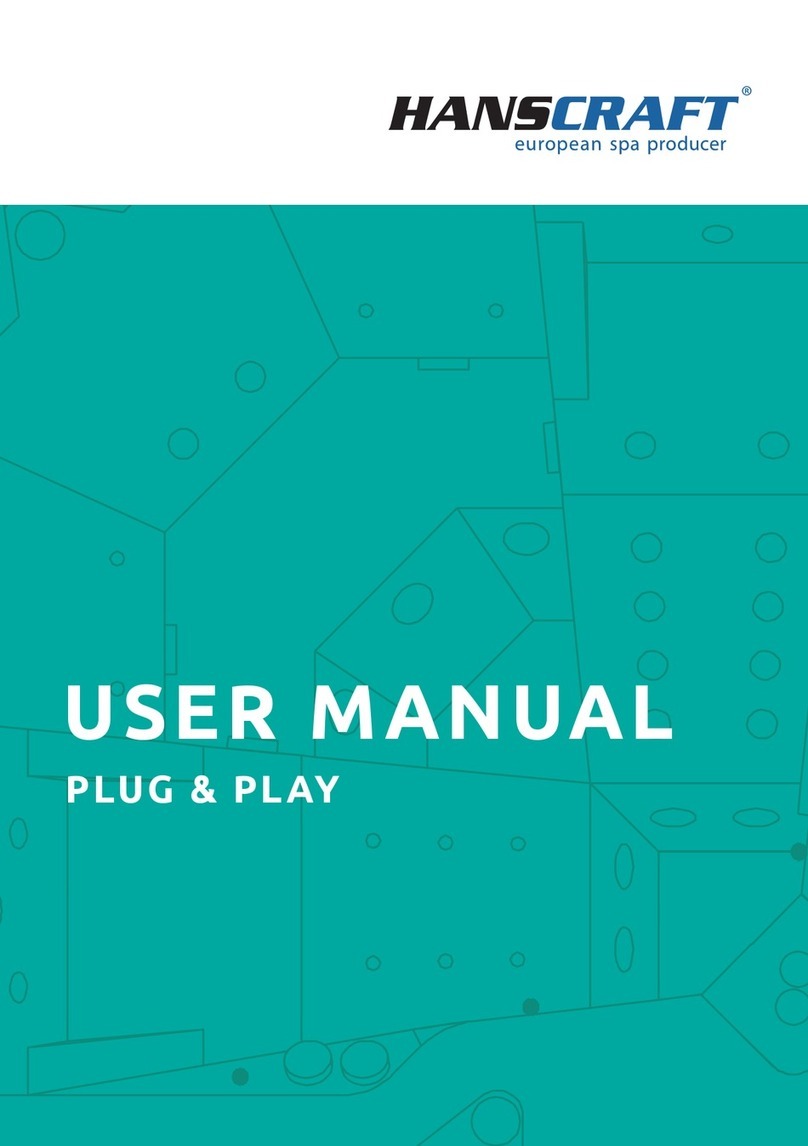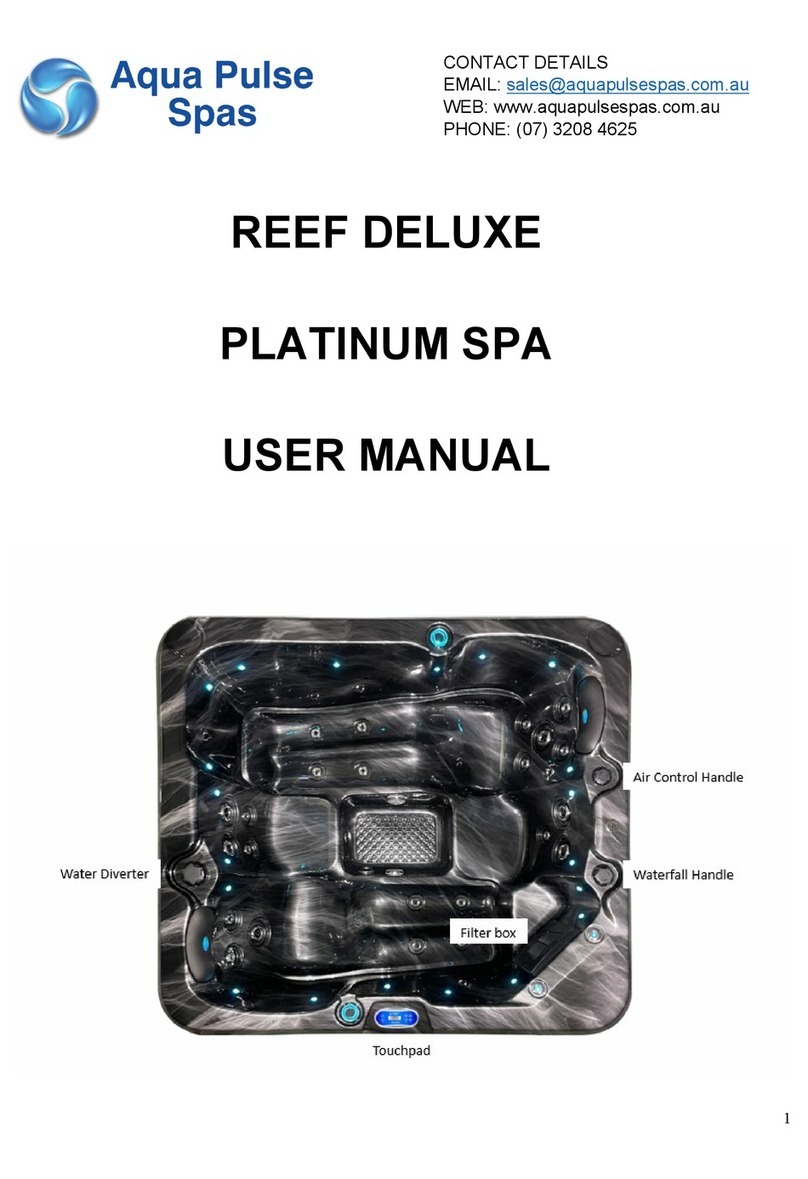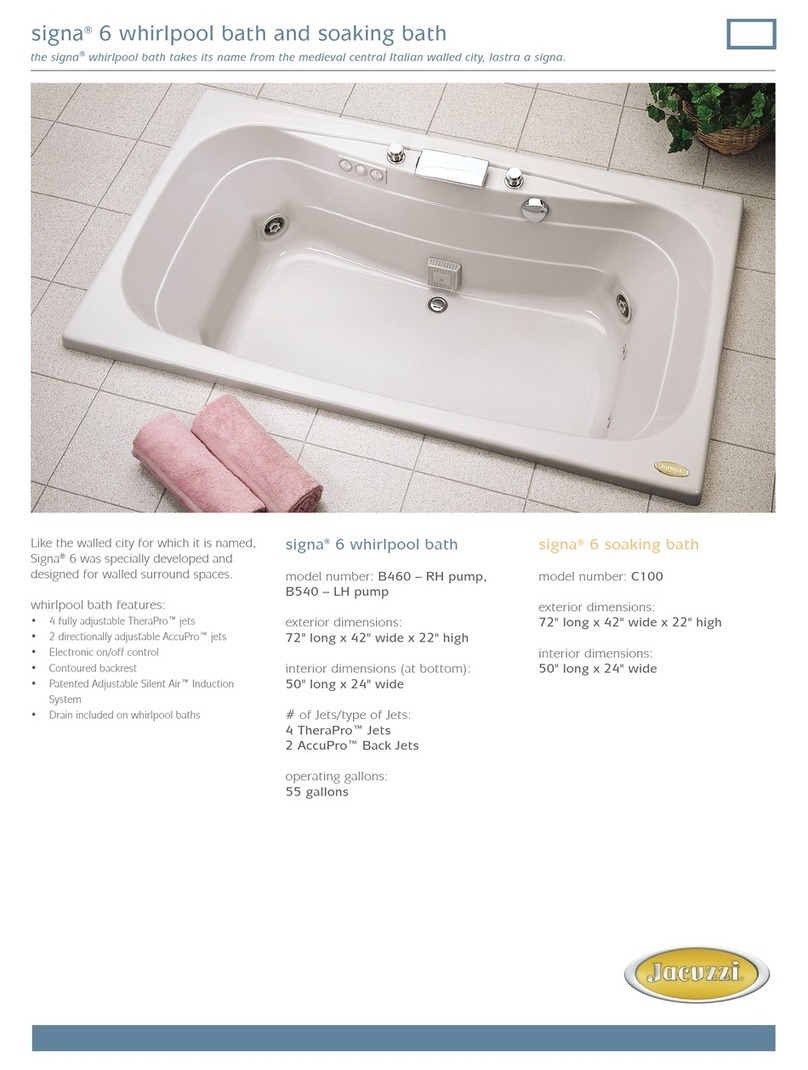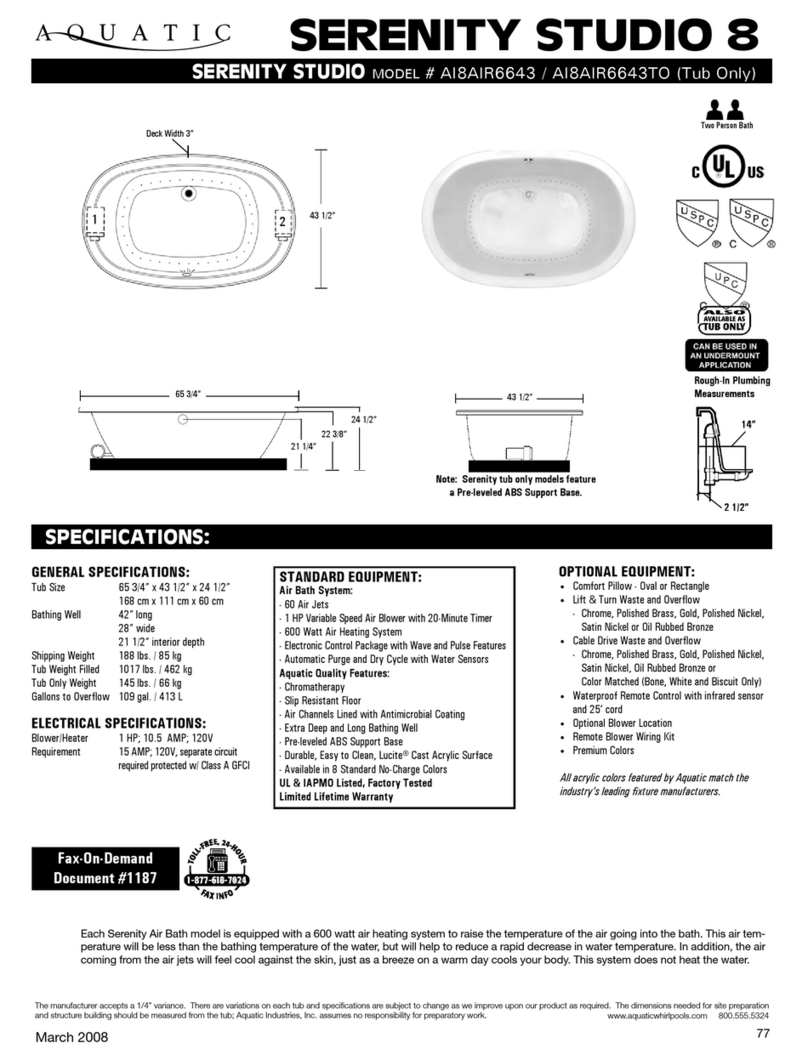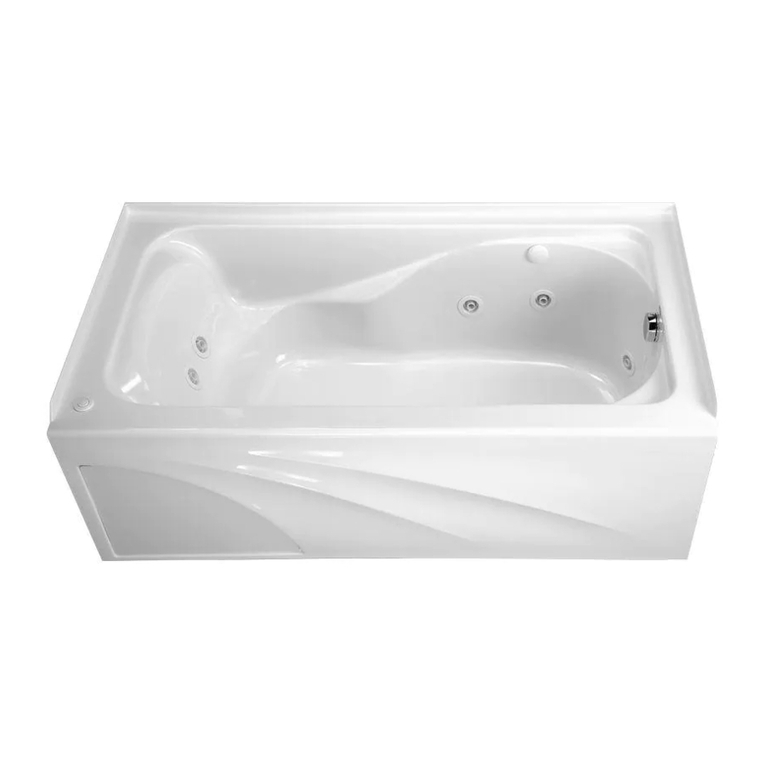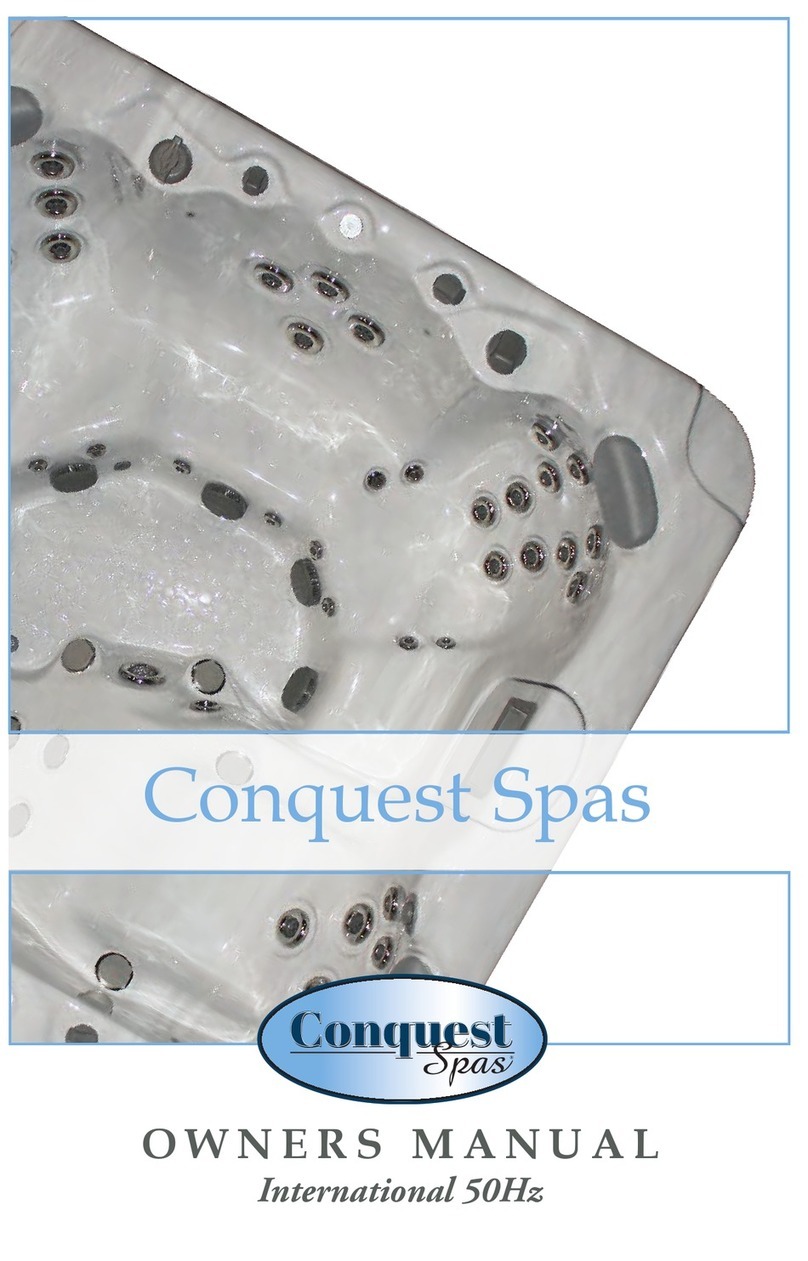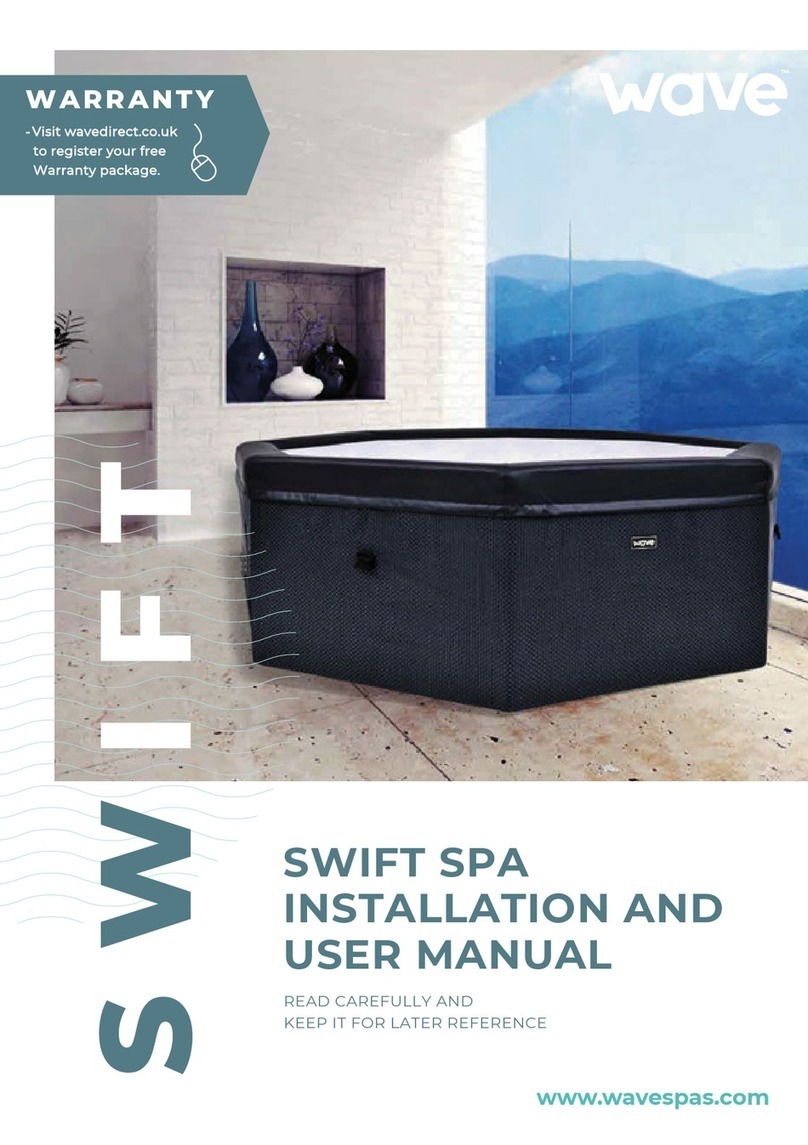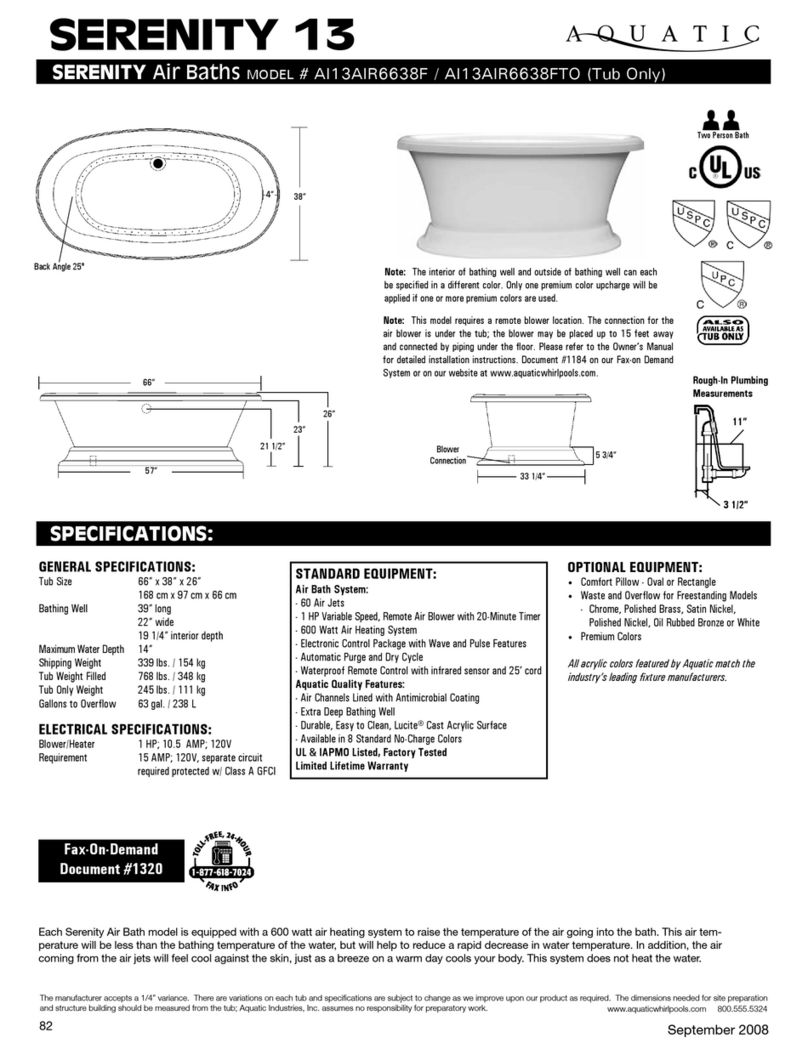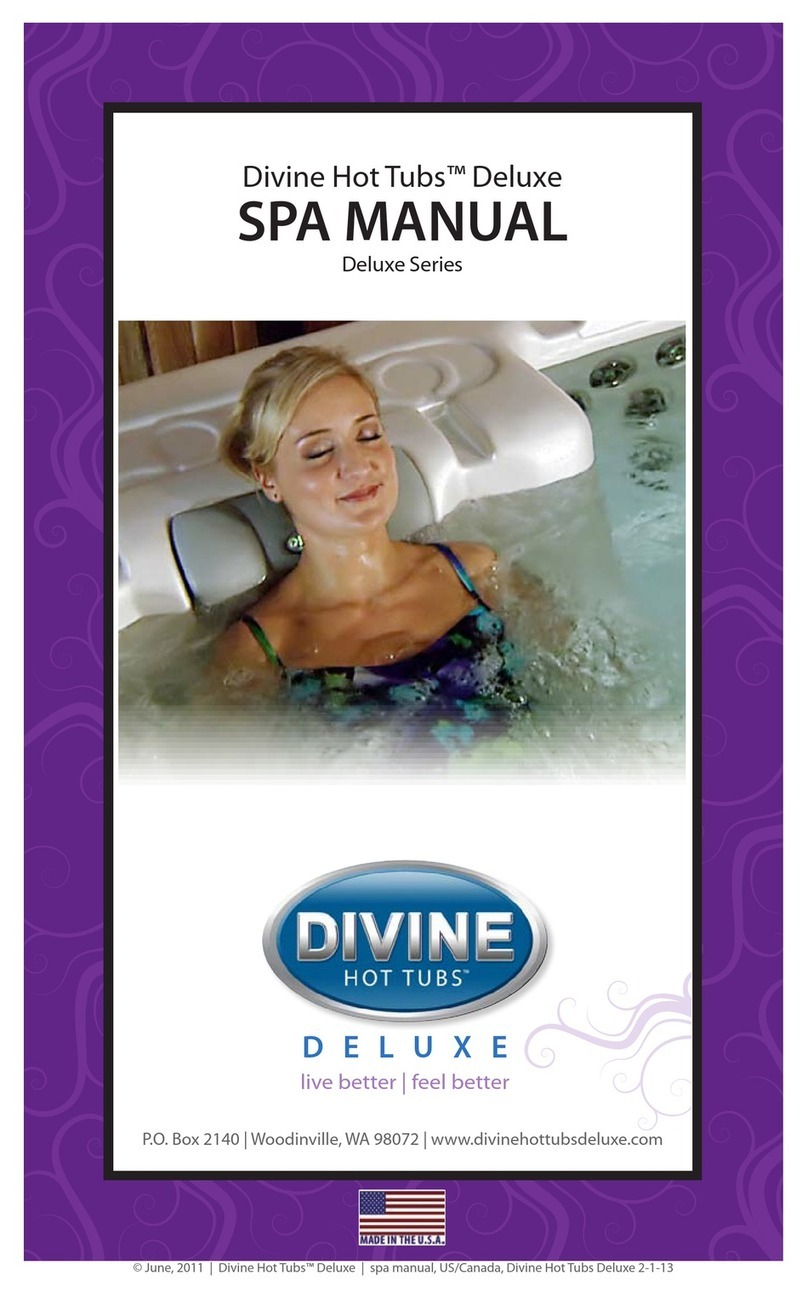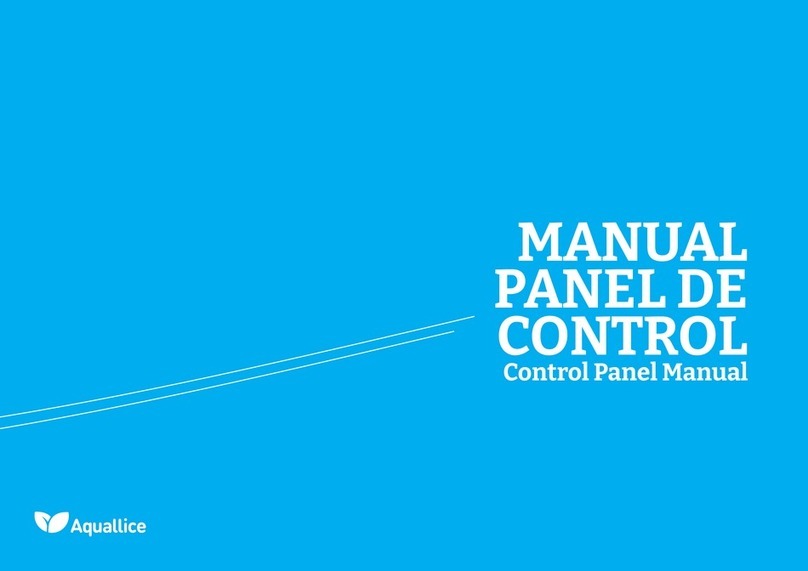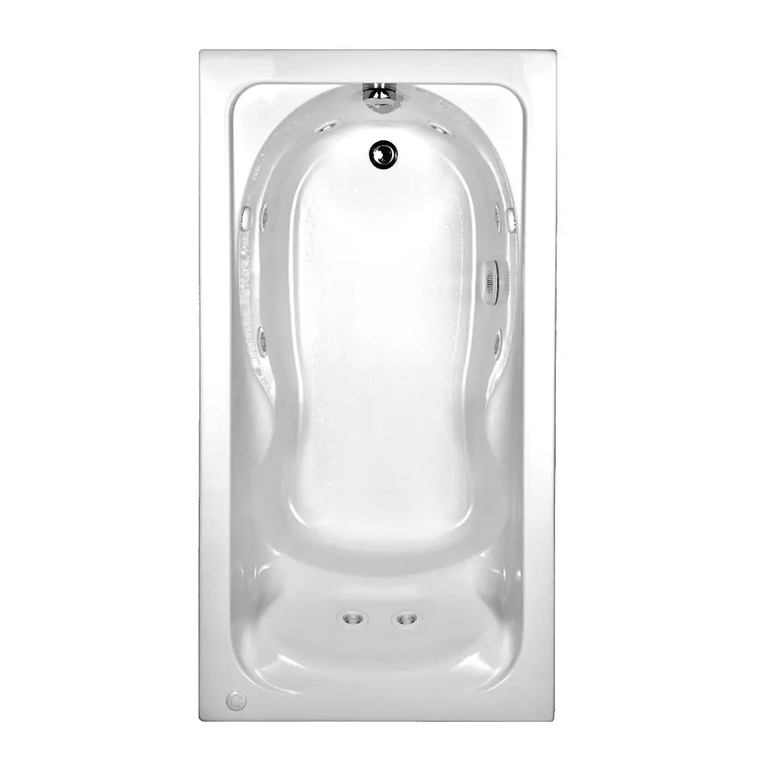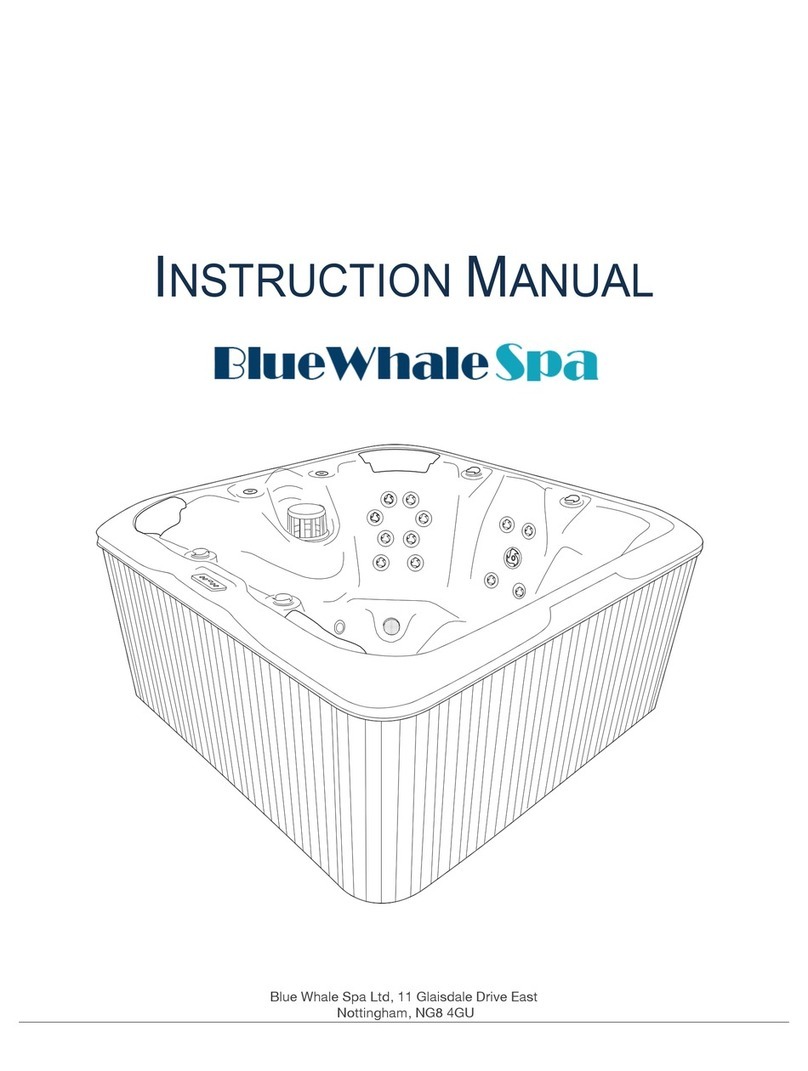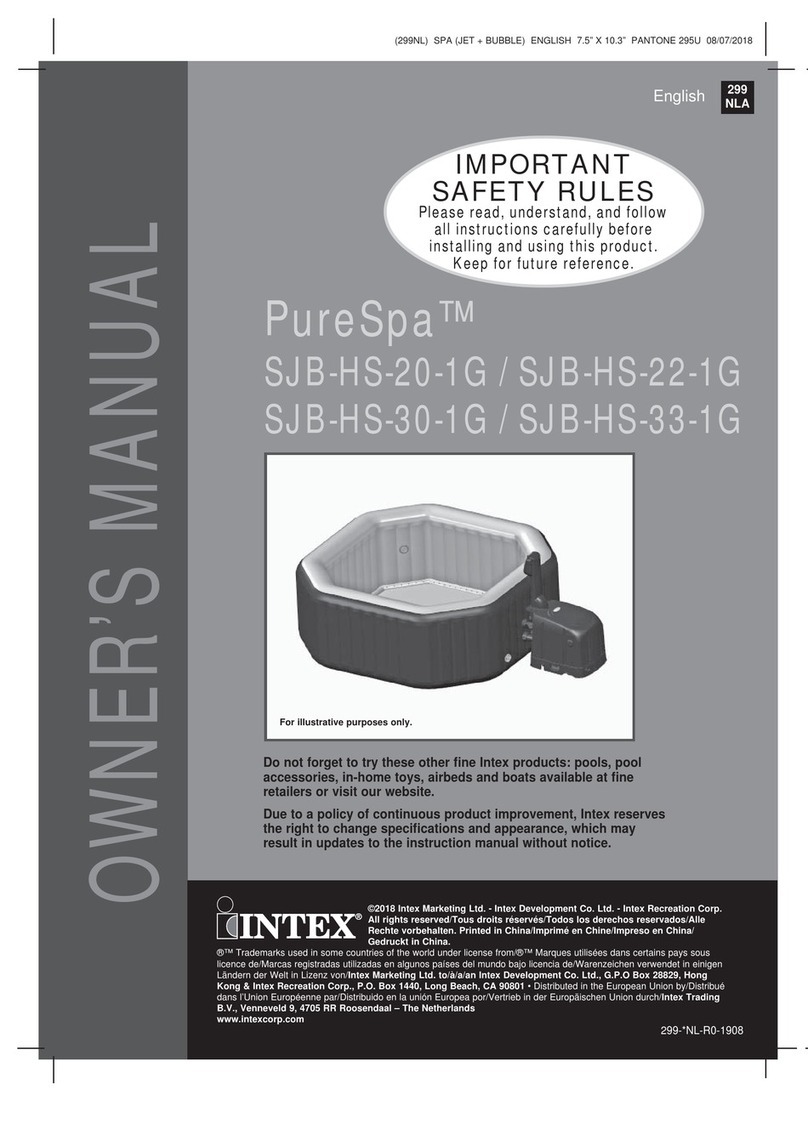18
Chlorinated concentrate produces chlorides and chloramines, which are formed
when chlorine has combined with ammonia and nitrogen in pool and spa water.
Chloramines exude a foul,“chlorine”odor and causes skin and eye irritation.
BROMINE – Bromine is the other commonly used sanitizer or disinfectant in pool
and spa water to kill bacteria and algae, and oxidizes ammonia and nitrogen com-
pounds such as swimmer waste. This chemical does not eliminate swimmer waste
unless it is combined with an oxidizer (non-chlorine shock). It is very susceptible
to direct sunlight, therefore is not ecient in outdoor pools. Bromine is sometimes
used as an alternative for people whom are allergic or sensitive to chlorine products.
Bromine products are available as sodium bromide and bromine tablets. The bro-
mide ion has no eective disinfectant or sanitizing capabilities without the use of
nonchlorine shock (potassium monopersulfate). Potassium monopersulfate is added
to oxidize, or activate, bromide ion to bromine, which rapidly forms the active sanitiz-
er - hypobromous acid - in spa water. Upon reaction with bacteria and other spa con-
taminants, hypobromous acid is reduced back to bromide ion, ready to be activated
again by the next dose of potassium monopersulfate. Potassium monopersulfate
begins to produce bromine immediately and continues to do so for several hours,
providing sucient time for oxidation of bather waste and other organic contamina-
tion such as ammonia and nitrogen.
NON-CHLORINE SHOCK (Potassium Monopersulfate) – Also known
as“Oxy-Shock”, is an important chemical used in the process of disinfecting and sani-
tizing the spa water. Non-chlorine shock is used as an oxidation agent to oxidize
and eliminate organic contaminants, dead algae and debris, and will also convert the
chlorine by-products (chlorides and chloramines) back into free available chlorine.
When used with bromine products, non-chlorine shock is used with sodium bromide
in a two-part disinfection system. Potassium monopersulfate (non- chlorine shock) is
added to oxidize, or activate, bromide ion to bromine which rapidly forms the active
sanitizer - hypobromous acid - in spa water. Upon reaction with bacteria and other
spa contaminants, hypobromous acid is reduced back to bromide ion, ready to be
activated again by the next dose of potassium monopersulfate.
Most non-chlorine shock products have buers that reduce pH instability, and corro-
sion inhibitors that help protect the heater and other metal surfaces.
OZONE – Ozone is a powerful gas that is used as a sanitizer and an oxidant to keep
the spa water clean and disinfected. Although ozone is about 3000 times more
powerful than chlorine, it has a tendency to dissipate quickly and does not create
any sanitizer residual. By using an ozonator for your spa, you can cut maintenance
time and chemical costs by as much as 60%. Ozone is manufactured by an ozonator
(ozone generator) and is dispensed during the ltration mode.
pH Controllers
SODIUM BICARBONATE - Commonly used to increase pH and total alkalinity of
spa water. Sodium bicarbonate is also known as natural baking soda.
SODIUM CARBONATE – Also known as soda ash, is a substance used to raise pH
and total alkalinity.




















